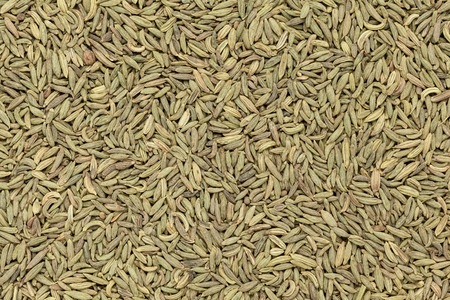
Aniseed (Pimpinella anisum) is full of sweet-shop memories but this powerful aromatic herb has been in use for millenia, not just in foods for flavour but as a stomach calmer or digestif. It is a member of the Apiaceae (Umbelliferae) family, which includes carrot, parsley, dill, fennel, coriander, cumin, and caraway.
History
Aniseed (anise) is a native of the eastern Mediterranean, especially Turkey and The Lebanon. It is probably one of the oldest known spice plants. The Ancient Greek name ‘anison‘ and the Latin name ‘anisum‘ are derived from an even earlier Arabic name ‘anysum‘. Anise or aniseed was used in Egypt as early as 1500 B.C. The Romans used aniseed-spiced cakes to aid digestion after heavy meals. The herbalist, John Gerard wrote in 1597 ‘The Seed wasteth and consumeth winde, and is good against belchings and upbraidings of the stomacke, alaieth gripings of the belly.’ Simply translated this means it’s ideal for reducing flatulence.
In India, a pinch of aniseed is often eaten after meals to soothe the stomach and aid the digestive fire.
The genus Pimpinella contains about 150 species of annuals and perennials with entire or pinnate leaves and dainty, star-shaped flowers borne in umbrella-like heads. These are followed by small, oval shaped fruits. Most of these species are found in Europe and Asia especially places such as Turkey.
Components
Anise contains anethole, estragole, eugenol, pseudoisoeugenol, methylchavicol, anisaldehyde, coumarins, scopoletin, umbelliferone, estrols, terpene hydrocarbons, polenes and polyacetylenes .
Uses
It is used for both medicinal purposes and as a spice in cooking. The oil has a strong licorice flavour and is found in artificial licorice candies, cough lozenges, and syrups.
When mixed with wine it produces the liqueur anisette such as Pernod and is found in raki, a Turkish alcoholic drink, and ouzo, a Greek spirit.
- Medicinally it is used to promote digestion and to increase urine flow.
- Aniseed is used in Europe to aid cancer treatment.
- In Mexico, Turkey, and China, it is used as a carminative (relieves intestinal gas) and galactagogue (stimulates breast milk production).
- Other countries use it to induce abortion and to treat respiratory illnesses, such as asthma, bronchitis, and cough.
- In combination with other herbs, anise has been used to treat head lice infestation.
The essential oils from the fruits of some Pimpinella species are also used in perfumery and in medicine.
Regulations
Anise is recognized as Generally Recognized as Safe (GRAS) by the U.S. Food and Drug Administration (FDA).
Products
Please note we have links to affiliate marketing partners. Please read our affiliate disclosure
References
Tepe, B., Akpulat, H. A., Sokmen, M., Daferera, D., Yumrutas, O., Aydin, E., … & Sokmen, A. (2006). Screening of the antioxidative and antimicrobial properties of the essential oils of Pimpinella anisetum and Pimpinella flabellifolia from Turkey. Food Chemistry, 97(4), pp. 719-724 (Article).
Revised 13/05/17


Leave a Reply